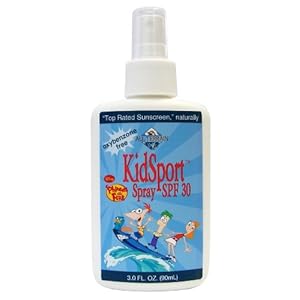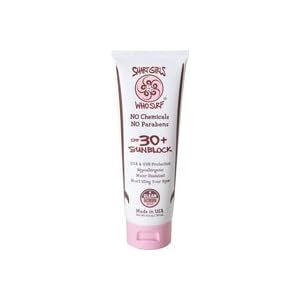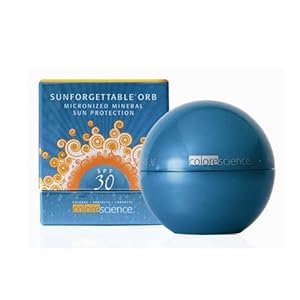I have rather fair skin and blonde hair. My skin burns in the sun. And I've burned it plenty or times. But I hate sunscreen as much as sunburn. Maybe more. Not just the yucky feel on my skin, but also all the things there are in there to be allergic to. I'm going to give you my, "Very sensitive skin" impression of some of the sunscreens in my stash. I use mineral sunscreens to block out UVA and UVB rays and to avoid the rashes I get from "chemical" sunscreens. Having allergies really limits your choices, so if that's you, maybe my trials will help you.©Science-y Hair Blog 2013
Price:
Under $10 = $
Under $10-20 = $$
Greater than $20 = $$$
*** I'll keep using it and buy it again when I'm out.
** I'll use up the bottle, if I grow to love it, I may keep some around.
* This is destined for the trash unless I can find somebody to give it to.
***Devita Solar Body Block, SPF 30. $$ This is the one that goes with us on the road. It rubs in like a very light lotion, it is clear.
Pros: Easy to use, no fragrance, no formaldehyde preservatives, no greasy feel.
Cons: Can be a little tingly/sting the eyes. Rubs off high-friction areas like the hands. If used often, can cause or worsen acne - it's the seaweed extracts! Not very water-resistant.
***Devita Solar Protective Moisturizer (right) is a little less stinging to the eyes (I don't mean when it runs into the eyes, I mean to have on the skin under them). It's even lighter-weight and nice on the face. Not perfect, but close.
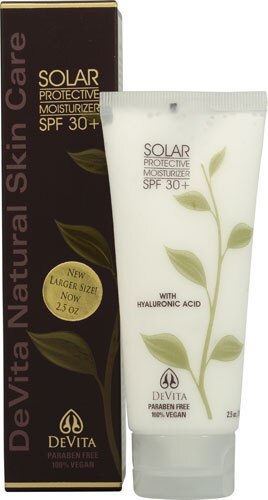 |
| For the face |
*All Terrain KidSport SPF30 Natural Sunscreen Spray- Phineas and Ferb (3- Ounce). $$
Pros: It's a spray, has no scent and SPF 30. No formaldehyde preservatives.
Cons: I burned right through this in about 2 hours. Feels slimy or oily on skin and a little tingly/burning.
I can't blame the product entirely, but it is difficult to apply enough spray to get a solid coating and then keep it in place. It has a very slippery skin-feel. The SPF may be 30 under testing conditions or hypothetically, but the reality was much different, and I have the very red arm and peeling neck to prove it.
*Smart Girls Who Surf 30+ SPF Sunblock. $ to $$©Science-y Hair Blog 2013
Pros: Smells like orange blossoms (or "black locust" blossoms). Rubs in like a lotion, mostly clear. Seems to resist rinsing/sweating off. No formaldehyde preservatives.
Cons: Stings/burns. Like some mineral sunscreens, when you begin to sweat (even just tiny beads of sweat on your arms) it begins to feel very hot, heavy and occlusive. I couldn't get this one washed off fast enough. It was difficult to wash off - so that's also a "pro."
**BurnOut Eco-Sensitive Zinc Oxide Sunscreen SPF 32. $$
Pros: Easy to spread on the skin, very clear - like the name says - clean and clear. Resists rinsing off, no formaldehyde preservatives. Doesn't seem to sting - yet, anyhow. No fragrance.
Cons: Rather expensive for a smallish bottle. It is difficult to wash off (which is, of course, also a "pro").
***Colorescience Pro - Sunforgettable SPF 30 Mini Orb. $$
I've had this one for a while - it's tricky to use.
Pros: It really covers and stays in place - but is best for small areas like the face or hands. Resists rubbing and washing off. No formaldehyde preservatives, no fragrance.
Cons: It's a powder, so you need a cosmetic brush to apply (the little puff it comes with gets lost easily and doesn't work very well). It's likely to get into the eyes unless you're very careful. It must be applied to skin after a good lotion. This mineral powder will suck every molecule of water out of your epidermis, so you need a barrier of skin lotion, even if your skin isn't dry or chapped.
This stuff is great for the nose, the cheekbones and hands - places where sunscreen tends to rub off or that get a lot more sun than other parts of the body. It's fun to apply and comes in various tints to match your skin tone, including sparkly tints - though I didn't think husband would go for that. It's a bit hard to remove and though it has no fragrance, I can smell the "zinc oxide" smell unless I wash it off really well. Again, that is also a "pro" but for the sensitive noses.
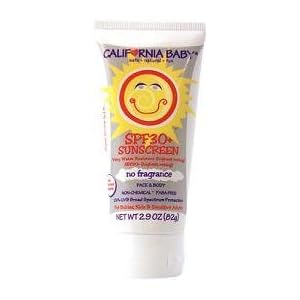 |
| Gave this one away. |
A sunscreens that was just too awful to use again, even though it worked: California Baby ($$). No sting, great coverage and water resistance, but everything I touched, leaned against (cars, clothes) was permanently marked with a semi-greasy, white residue. Nasty.
You can still find me in my wide-brimmed hat and long sleeves/pants if I'm out very long. That's how much I hate sunscreen.



